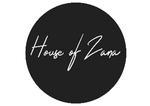Little beats large
The Court backed a boutique brand, says Eve Duggan. O/658/22, Amber Kotrri v Industria de Diseno Textil, Sociedad Anonia, UK IPO, 3rd August 2022.

Key points
- This may be the first time that the quality and duration of the mental link have been a factor in s5(3) grounds
- Opponents should not presume a likelihood of confusion/association because they can prove enhanced distinctiveness and/or reputation for the dominant element of a mark
- Ensure additional legal tests set out under a s5(2) or s5(3) claim can be met, particularly when comparing the overall impressions of marks
In December 2020, Amber Kotrri applied for a UK series trade mark covering “clothing” in class 25.
High‑street store Zara opposed on the basis of four earlier word marks for ZARA covering identical goods on the basis of likelihood of

confusion and all of the “reputation” grounds. Zara was unsuccessful on all grounds.
It was no surprise that Zara successfully demonstrated enhanced distinctiveness in its ZARA mark.
However, the Hearing Officer (HO) still found a number of visual, aural and conceptual differences when assessing the overall impressions of the marks.
In particular, the phrase “HOUSE OF” played a role in this finding. The HO held that the phrase is “flavoured with a gentle grandeur” to such an extent that it had a “degree of distinctiveness” and that “ZANA” did not dominate the

later mark.
It will be interesting to see how this finding affects future cases as it challenges the presumed view that HOUSE OF is non‑distinctive for “clothing”, given it is often used to describe fashion houses.
However, the HO went on to state that “ZANA is the distinctive component of the Contested Mark”, which seems to be at odds with the statements as to the distinctive character of HOUSE OF.
Taking the comparison as a whole, and particularly given the different visual impressions, the marks were found to be distinguishable.
Reputation grounds
Zara’s reputation was not disputed under this ground. It was the remaining s5(3) legal tests that the claim rested upon – in particular, the risk of association and subsequent injury.
As for the risk of association, the low to moderate degree of similarity between the marks was just enough to prove the necessary mental link.
However, the HO referred to the link as “insubstantial and fleeting” and therefore not enough to result in any kind of image transfer or cause any detriment.
This may be the first time that the quality and duration of the “link” have been a factor in s5(3) grounds. Previously, if a link has been found – of any quality or duration – that does suffice to meet the “link” part of the s5(3) test.
The tension between the assessment of HOUSE OF and ZARA/ZANA demonstrates that opponents should not presume a likelihood of confusion/association because they can prove enhanced distinctiveness and/or reputation for the dominant element of a mark.
It is important to ensure the additional legal tests set out under a s5(2) or s5(3) claim can be met, particularly when comparing the overall impressions of marks.
This case attracted significant media attention from multiple news outlets. It was not an unreasonable opposition for Zara to file, but it appears to have suffered from a “David and Goliath” perception insofar as the media coverage was concerned, and that is an additional reputational factor that should be taken into account, particularly when opposing unrepresented applicants.
Eve Duggan is a Trade Mark Assistant at Boult Wade Tennant LLP
Click here to read the full issue.





